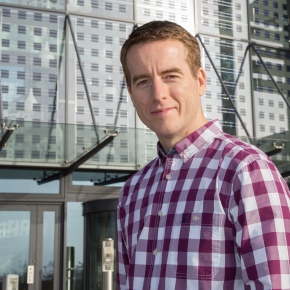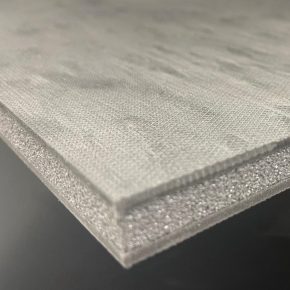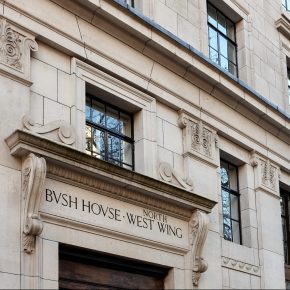
Sustainable building tops business agendas
Peter Quincey, Director of Property at Exeter-based sustainable property developer Grenadier Estates comments on the growing responsibility of the sustainable building sector. He believes that its rise in popularity is not just down to ‘green’ ethics but to the overall positive effect on occupiers’ well-being and business performance.
Our interpretation of a green building has come a long way. Back in the eighties, the word green was in part associated with eco-warriors and other planet protective activities. Even now some industry talk surrounding green builds refers solely to the environmental features of energy, water and waste. But we really need to widen our interpretation to encompass other social economic elements that have become increasingly important in the design and construction of a ‘green build’.
This is clearly apparent in the world of commerce where businesses are realising the impact of a building upon the health, wellbeing and productivity of their workforce. Attention to matters such as indoor air quality, thermal comfort, acoustics and interior layout has a significant impact on people’s health, reducing absence rates and staff turnover.
Of course, the potential benefits of lower operating costs are extremely attractive when energy accounts for up to 30 percent of a building’s lifecycle cost and, globally, buildings are responsible for 41 percent of energy consumption. With increasing public demand for more environmental transparency and industry regulations to meet, sustainable building is instrumental in improving financial, regulatory and reputational standing of an organisation.
Our own head office, Oxygen House, was built to the BREEAM sustainability rating of ‘Excellent’ and we are applying the same values to our latest project. We are building an EPC A rated office building, which will be occupied by insurance firm LV= who wish to provide a happy and productive environment for their workforce while minimising the impact of their operations on the environment.
This opportunity for businesses to increase their competitiveness through better designed and utilised buildings is not limited to new builds. Existing premises provide the basis for a truly sustainable asset and a considered approach to refurbishment can achieve excellent environmental performance and regulatory compliance.
For instance we are committed to creating visionary homes at former school buildings in Exeter, which are Grade II and II* listed. Our work to reach the highest environmental standards of an EPC A rating combined with PassivHaus EnerPHit standards across the development is something we’re working with Historic England on. We must balance the care to maintain a period property with the creativity to achieve outstanding energy efficiency in order to create more than 40 EPC A homes. Quite a challenge.
The industry is now tasked with designing buildings that balance our human needs as well as those of our planet. Ultimately, they’re higher quality buildings. This challenge requires the industry to think differently and innovatively but it can be done. And done right, it will have a positive impact on our health, well-being and productivity as a nation.
Latest news

29th April 2024
Hush: New Hushlay options offer acoustic upgrade potential
Leading UK acoustic systems manufacturer Hush Acoustics has introduced two additional variants of its Hushlay Soundmatting product.
Posted in Acoustics, Noise & Vibration Control, Articles, Building Industry News, Building Products & Structures, Building Services, Facility Management & Building Services, Floors, Innovations & New Products, Insulation, Restoration & Refurbishment, Retrofit & Renovation
29th April 2024
Digital Construction Week 2024 speaker programme announced
The programme at Digital Construction Week is carefully designed to help you keep up with the fast pace of innovation in the built environment.
Posted in Articles, Building Industry Events, Building Industry News, Building Products & Structures, Building Services, Exhibitions and Conferences, Innovations & New Products, news, Posts, Restoration & Refurbishment, Retrofit & Renovation, Seminars, Sustainability & Energy Efficiency
29th April 2024
Steel Window Association - for the specialists in domestic and commercial refurbishment of steel windows
The UK-wide Steel Window Association members are the established, proven experts in the renovation and sympathetic refurbishment of steel windows and doors in both domestic and commercial premises.
Posted in Architectural Ironmongery, Articles, Building Associations & Institutes, Building Industry News, Building Products & Structures, Building Systems, Doors, Glass, Glazing, Restoration & Refurbishment, Retrofit & Renovation, Steel and Structural Frames, Windows
29th April 2024
The Rooflight Association: Rooflights & Fire Regulations - what you need to know
The Rooflight Association has published a series of ‘Quickguides’, covering the fire rating requirements for use of rooflights in buildings for each of the four devolved UK nations.
Posted in Articles, Building Associations & Institutes, Building Industry News, Building Products & Structures, Building Regulations & Accreditations, Building Services, Ceilings, Health & Safety, Innovations & New Products, Lighting, Publications, Restoration & Refurbishment, Retrofit & Renovation, Roofs, Security and Fire Protection, Walls, Windows
 Sign up:
Sign up: